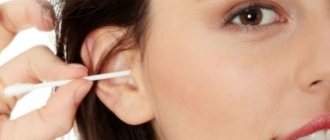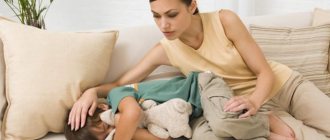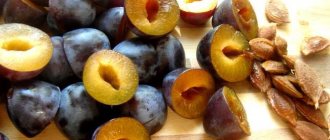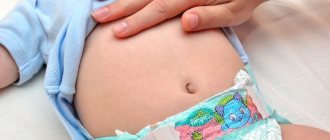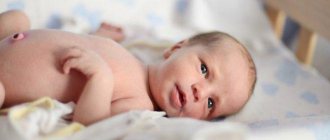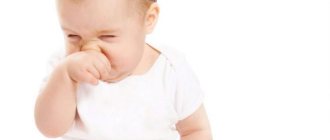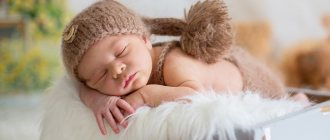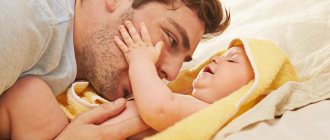Any deviations in the health of children are immediately reflected in their behavior. For example, if a child constantly scratches his head, attentive parents should definitely think about the reasons.
It is likely that the baby is simply lost in thought, puzzled, or captivated by the cartoon. In this case, his movements may be unconscious and involuntary. However, there can be a lot of options, and not all of them are so harmless. How to understand why a child scratches his head and what needs to be done in this or that case?
Why might your head itch?
There can be many reasons why a child regularly combs the skin under his hair. Here are just a few of them:
- Poor hair care, non-compliance with hygiene rules.
- Using shampoo that is not suitable for your hair type.
- Allergic reactions to shampoo components or food.
- Fungal infections of the scalp.
- Pediculosis.
- Vitamin deficiency, lack of minerals and nutrients.
- Stress.
- Malfunctions of internal organs.
- Disorders of lipid metabolism of the skin.
- Ticks.
- Behavioral problems.
There are other reasons, some of which we'll look at in more detail below.
Features of treatment for itchy scalp
If an unpleasant symptom appears, it is necessary to show the baby to the pediatrician. Depending on the cause, the help of specialized doctors may be required: dermatologist, trichologist, endocrinologist, neurologist. In case of allergies, it is recommended to take special tests that help identify provoking irritants.
For pediculosis, you need to buy pharmaceutical preparations that destroy insects: “Nittafor”, “Parasidosis”, “Nix”, “Paranitis”. Solutions cope with the problem in 1-2 applications. To treat redness and bites, you can use sulfur ointment, hydrogen peroxide, and wash your hair with tar soap.
Clotrimazole - antifungal cream for scalp treatment
For ringworm, the disease must be treated comprehensively:
- apply Clotrimazole, Mycospor, and Lamisil ointments to the spots for a month;
- give the baby antimycotics in tablets “Griseofulvin”, “Terbinafine”;
- treat scratches with hydrogen peroxide, chlorhexidine;
- use antihistamines Zodak and Claritin to reduce itching.
You can make compresses with a decoction of St. John's wort, chamomile, and string to reduce the unpleasant burning sensation. To speed up healing, apply aloe pulp to the wounds and rub in celandine juice.
For neuralgic problems, the doctor selects sedatives. They reduce tension and eliminate itching. At home, tea made from mint, lemon balm, and motherwort can be useful. Before resting, you can take a bath with the addition of essential oils of lavender and sage.
Personal hygiene
One of the most harmless situations in which a child scratches his head is a violation of personal hygiene rules. This does not mean at all that your baby is dirty. Even with regular water procedures, a child may simply not rinse off the shampoo well enough or not wash away the dirt very thoroughly.
This situation can cause inflammation of the hair follicles, which is manifested by noticeable itching. It also happens that shampoo is simply not suitable for a child. It turns out to be a vicious circle: the more the mother washes the baby’s hair, the more it itches.
Treatment in this case will be very simple. It is enough just to change the shampoo, wash your hair regularly and make sure that your child washes his hair thoroughly.
Treatment options
For safety, they prefer to use medications with natural ingredients. Sometimes you can make them yourself, for example, a decoction of chamomile or string. Ointments and creams to prevent itching and flaking are also popular:
- baby cream;
- zinc ointment;
- Bepanten;
- Depanthenol.
However, the above methods only help in case of natural causes of scalp problems. There are times when such treatment is not enough, so the smartest decision before starting treatment is to consult a doctor to determine the cause of the problem.
Pediculosis
Another common reason that a child scratches his head can be the notorious lice. Unfortunately, lice is a highly contagious disease. It is enough just to play next to the patient in the same sandbox or sit at the same desk.
Long gone are the days when you got rid of uninvited “guests” using kerosene or smelly dust soap. Modern drugs are readily available, easy to use and smell pleasant. Among the popular ones are “Para Plus”, “Pedikulen” or “Nittifor”. Just 1-2 treatments, and the lice will leave your child's head.
But at the same time, you should definitely treat the heads of all family members, boil and iron all bedding and clothing on both sides.
Allergic reaction
When a child scratches his head behind the ears, he may have an allergic reaction to some food. In this case, redness or rashes will not necessarily be observed. The scalp is much denser than other parts of the body, so rashes here may appear later.
To fix the problem, try to find its source. Think, perhaps you purchased a new shampoo or washing powder? Have you given your child new foods? Have you treated any disease with unusual medications?
As soon as the cause is established, eliminate the effect of the allergen and after a while the situation will improve.
Bad habit or neurosis
Sometimes a child scratches his head, just trying to attract attention. And in some cases it turns into a bad habit. The baby unconsciously scratches the top of his head without even noticing it.
The situation is much worse when “pruritus” is a consequence of neurosis. Watch your baby carefully. You may notice other symptoms:
- changing habits;
- refusal to eat;
- depressed mood;
- problems with pronunciation;
- changes in behavior;
- frequent headaches for no apparent reason;
- sleep disorders.
If you find anything like this, it is best to seek advice from a psychologist. A good specialist will help the child talk and find out the cause of mental anguish.
Psoriasis
If your child scratches his head frequently, he may have psoriasis. The first manifestations of this disease often appear on the back of the head. Outwardly, this may look like slight peeling of areas of the skin. Over time, the peeling becomes more noticeable, irritation and quite severe itching appear. Reddish spots may also appear on the knees and elbows.
Unfortunately, scientists have not fully figured out what triggers the onset of this disease and how to treat it. Psoriasis is not an infectious pathology. But it is not yet possible to cure it completely. The doctor will prescribe medications that improve the condition of the skin and detoxify the body. In severe situations, treatment is carried out with corticosteroids.
Possible causes of itching
The problem is especially relevant in the warm season. High air temperatures cause profuse sweating, which is a favorable environment for the development of fungal and infectious diseases. In addition, many children do not follow the rules of personal hygiene.
A child’s head may itch for a number of reasons:
- pediculosis;
- demodicosis;
- dermatomycosis;
- scabies;
- sarcoptic mange;
- ringworm;
- allergy;
- psoriasis;
- seborrheic dermatitis;
- metabolic disease.
Examination by a doctor
Important! When the first signs of fungal or infectious diseases appear, you should immediately consult a doctor. Only a specialist can make an accurate diagnosis and prescribe effective treatment.
Pediculosis in children
Pediculosis is the appearance of lice in children. The eggs of parasites are called nits. No child is safe from infection. Even in prosperous families, children can catch lice. Nits appear in a child about a week after infection. A fleeting contact with the host is enough, after which the parasite will begin to actively explore new territory and reproduce.
The main cause of head lice in children is contact games with peers. Sandbox, swing, school, kindergarten, public transport, entertainment events - you can get infected everywhere. Nits are transmitted only from person to person. Lice are species specific, so you cannot get them from pets or other animals.
Symptoms of head lice in children:
- small (2-3 mm) gray or brown insects in the hair;
- itching in the ears and temples;
- redness at the bite sites;
- allergic rashes on the face;
- silvery bubbles on hair.
For reference! Lice in a child can be detected visually only after 1-2 weeks, when the parasite has already gained a foothold and has begun to multiply. It is almost impossible to notice rare individuals at the initial stage of infection.
Demodicosis
If a child has an itchy head, but there are no lice, then the cause may be mites - demodexes (mites). They concentrate near or inside the hair follicles, causing itching and burning. Ticks carry fungal and infectious diseases.
Parasites can only be detected by scraping in a laboratory setting. The doctor prescribes complex and at the same time long-term therapy. Self-medication in this case is excluded.
Dermatomycosis
This is a fungal disease that can be contracted from pets: the child’s head, face and feet itch. Redness appears on the skin, where purulent abscesses form in the center. The hair becomes brittle and, in advanced cases, falls out. Treatment is carried out only under the supervision of a doctor.
Scabies
If a child has a very itchy head, it is possible that he has contracted a scabies mite. As a result of the parasite's activity, itchy rashes and dark papules appear on the skin. Diagnosing the infection visually is quite problematic: a microscopic examination of the scraping is required. Treatment is prescribed only by a doctor.
Scabies
Scabies is transmitted both from person to person and from animals. The tick can also be found in common objects. If a child has been diagnosed with scabies, then visiting schools, kindergartens and any other public places should be excluded until complete recovery. If simple hygiene rules are not followed, the parasite will actively develop.
Sarcoptic mange
This is a non-seasonal and contagious skin disease caused by the Sarcoptes mites of the same name. Pests primarily parasitize animals, but can also live on humans. After infection, a rash forms on the skin, and then blisters appear. In advanced cases, numerous ulcers, fistulas and severe itching are observed.
You can become infected with sarcoptic mange from almost any warm-blooded animal. The most common scenario is children coming into contact with sick dogs. Only a specialist can identify ticks and prescribe treatment.
For reference! The parasite is not transmitted from person to person. Among livestock breeders and equestrians, sarcoptic mange is considered an occupational disease.
Ringworm
This is a fungal infection that primarily affects the hair and skin. Clear signs of ringworm are bald spots on the head. As the disease progresses, the hair begins to break at the base and fall out. All this is accompanied by severe itching on the child’s head, causing him to scratch constantly.
The infection is highly contagious and spreads through domestic and wild animals. In rare cases, infection occurs through another person. Treatment for ringworm is not only long-lasting, but also painful. For diagnostics, special equipment is used - a Wood's lamp.
Allergy
A child's scalp may itch due to an allergic reaction. Allergens include food, dust, feathers, fluff, pets or interior items. Intolerance can only be detected in laboratory conditions. Patients are prescribed allergy tests, after which the optimal drug for treatment is selected.
Scalp psoriasis
This is a chronic pathology that is not related to infectious diseases. Psoriasis manifests itself in the form of dry dandruff, which forms a thin crust on the scalp. Indirect signs of the disease are red spots on the elbows and knees. With relapses, the head may itch constantly.
For reference! Unfortunately, it is impossible to completely get rid of psoriasis; you can only temporarily relieve the symptoms. The disease is not contagious, so there is no need to isolate the child.
Seborrheic dermatitis
This skin disease is caused by the fungus Malassezia. Seborrhea develops on the sebaceous glands, causing an itchy scalp. Dermatitis is more common in adolescents than in children. The fungus can be activated as a result of stress or hormonal changes in the body.
The disease disrupts the normal functioning of the sebaceous glands, which causes itching. As a medicine, special shampoos and antifungal agents are used that restore skin microflora.
Seborrheic dermatitis
Metabolic disease
Until the age of 10, a child’s metabolism is more or less stable. Frequent stress and poor nutrition can disrupt it. As a result, the baby experiences mood swings, sleep disorders, loss of appetite and itchy scalp.
As for teenagers, a wave of hormonal explosion can affect almost any organ. As a rule, this process ends naturally. But sometimes the doctor prescribes hormonal drugs to stabilize.
Metabolic disease
This is a fairly serious disruption in the child’s body. Most often, a slowdown in metabolism is the result of a sedentary lifestyle and poor diet. Excess weight forces the sweat and sebaceous glands to work harder. Increased sweating provokes the proliferation of opportunistic microflora and causes irritation on the skin.
Often the head begins to actively itch during puberty. This is due to the accelerated production of hormones and a sharp increase in oiliness of the scalp. The best way out is to show the child to an endocrinologist and rationalize nutrition.
Peeling skin in a baby
While in the womb, the baby is surrounded by water. At birth, his body begins to be exposed to air, and the body gradually adapts. The sebaceous glands do not immediately begin to produce the required amount of substances, so there is a possibility of problems arising. One of them is peeling, which lasts for several months.
However, sometimes peeling skin occurs due to some other factors:
- excessive use of detergents (they dry out the skin);
- using low-quality washing powder;
- washing with water containing large quantities of chlorine;
- cheap synthetic bedding or clothing for a baby;
- low-quality dyes used in the manufacture of baby clothes;
- problems with temperature in infants - increased sweating;
- too much sun rays;
- dry air.
Sometimes the underlying problem can be more serious:
- An allergic reaction of the child's body to something. There is no need to take risks; it is better to consult a doctor immediately to find out what the body reacts to so strongly (otherwise the allergy may develop into a serious problem).
- Before starting feeding with artificial formula, you should consult a doctor. Sometimes a child is allergic to substances that are part of unnatural baby food.
- Breast milk may lack vitamins. It is impossible to get rid of the problem without the help of doctors. Going to the hospital is mandatory.
Dermatitis
The cause of severe itching of the scalp may be seborrheic dermatitis or the well-known dandruff. Teenagers especially often suffer from this disease. This is one of the manifestations of puberty.
Parents need to understand that dandruff will not go away on its own. Most likely, advertised shampoos will not help either. They remove only the tip of the iceberg, while the hidden cause of the disease remains unclear.
Treating dandruff involves more than just using medicated shampoos. The doctor will adjust your diet, prescribe immunomodulators and probably recommend sunbathing. If the disease is the result of stress, it is possible to prescribe antidepressants or sedatives.
Demodicosis
This is another disease in which the child scratches his head a lot. The cause of this may be demodex mites or glandular acne. The disease is contagious and it is better to limit close contact with the patient. Most often, the tick affects those whose immunity leaves much to be desired.
In this case, only a doctor can select the correct treatment. Symptoms may include:
- At first, itching appears in certain places;
- acne appears, the skin turns red;
- hairs fall out;
- severe peeling appears in places of greatest damage;
- It may cause pain in the eyes.
Interestingly, the itchy area does not grow. New ones just appear with the same signs, the scalp literally becomes covered with spots. It is very important not to let your child scratch the lesions and carefully follow the doctor's instructions.
Lipid imbalance
If a 2-year-old child scratches his head and no apparent reason is found, he may be sleeping on a pillow made of synthetic material. If this is the case, simply replace the bedding.
If a small child is constantly in contact with synthetics, he may experience problems with lipid metabolism in the scalp. The back of the baby's head constantly sweats, and on the contrary, the hairs dry out, become electrified and split.
In this case, the doctor may prescribe a vitamin-mineral complex, advise replacing the pillow and pillowcase with natural ones, and select moisturizing products for the hair.
Ringworm
If a small child constantly scratches his head, it is likely that he has had close contact with a barn cat. The disease in this case is provoked by a rather dangerous fungus. It quickly takes root in the body of young children and people suffering from immune disorders. So if your child is scratching his head, examine him carefully. The symptoms are very eloquent:
- the affected areas are very itchy and have rounded outlines;
- hair thins, breaks or falls out altogether;
- redness and significant peeling appear.
If you find bald spots on your child's head, you should immediately run to a dermatologist. The disease itself will definitely not go away. Moreover, other family members can also get sick.
Fungal diseases occur much more often in children than in adults. This is due to the fact that the sebaceous glands of babies are not yet able to produce acids that prevent the fungus from penetrating the skin. And kids communicate more with sick animals.
During sleep, my daughter scratches the back of her head and rubs her eyes, and sleeps poorly. What could this be and how to deal with it?
My baby hasn't slept well for two weeks. I don’t know what exactly this is connected with: is it due to the heat (our temperature is high, at home it’s 29 degrees), the child sleeps in only shorts, with the windows open, but is still wet as a mouse; Whether with teeth, we have 2 lower lateral incisors coming in at the same time; with scratching of the back of the head and eyes... it’s a pity to look at the child how much it itches. When he goes to bed at night, he scratches and scratches, at night he wakes up every 30-40 minutes... without breastfeeding, he doesn’t fall back asleep. Who had this happen?
With these problems (problems) we went to the GP (doctor in England). No offense said: in Russia, doctors heal children (they make diagnoses with or without reason and prescribe a bunch of drugs, but in England they don’t treat them enough, meaning “everything is normal, it will pass” and in fact you need to know more than the doctor.) So, we were told, that everything is fine with us, the child looks good, eats well, but if he doesn’t sleep, at this age all children sleep poorly... And if it itches like that, it’s not scary either. I was worried that maybe the child had a nervous disorder or some kind of rickets. — Here’s one situation, so you can understand what kind of doctors we have here: at the age of 1 month, my daughter developed a severe rash, which for me, a young mother, looked scary and incomprehensible, at least the baby herself was not bothered by this rash. Sooooo, the doctor said that we were bitten...by spiders. SPIDERS...no, do you understand??? To my question why they didn’t bite us, the answer is very original, they say our skin is thicker. And when I asked if it could be a hormonal rash... so nooooo, it's SPIDERS. In the end, it was just a hormonal rash that disappeared on its own.
www.BabyBlog.ru
Preventive measures
In order for a child to stop constantly scratching his head, the cause should be eliminated as quickly as possible and existing diseases should be cured. But even after the situation has returned to normal, regular prevention of skin lesions should be carried out. Moreover, doing this is not so difficult:
- The child's head should be washed regularly and very thoroughly.
- It is necessary to select gentle detergents that suit his age and hair type.
- When washing, it is important to use only special children's products.
- It is necessary to comb the hair only with his own comb, and it is very important to convey your requirement to the teachers.
- It is important to wash and iron children's bedding, towels and hats regularly.
- It is necessary to ensure that the child’s head comes into contact only with natural materials.
- During walks, it is necessary to constantly monitor the baby and stop attempts to play with sick animals.
Preventive measures can also include a balanced diet, taking multivitamins, and regular sunbathing. And if problems are discovered, you should not let the situation take its course. Timely consultation with a specialist will help improve the situation and avoid additional problems.
Prevention of diseases in children
The child’s immunity plays an important role in resisting pathogenic microflora
Itchy skin exhausts the child, leads to nervousness, memory loss and sleep disturbances. Following simple rules for parents helps prevent complications:
- choose shampoo depending on age;
- do not use cosmetics with aggressive composition;
- purchase bed linen and clothing made from natural fabrics;
- regularly give vitamin complexes;
- strengthen the baby's immunity.
From infancy, it is necessary to purchase personal hygiene items for the baby and monitor their cleanliness. In case of an outbreak of head lice, special preventative sprays can be used.

